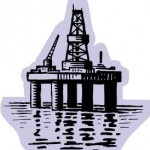The regulations of the Resource Conservation and Recovery Act (RCRA), enforced by the USEPA and states with an authorized hazardous waste program (Does Your State Have an Authorized Hazardous Waste Program?) requires the cradle-to-grave management of all hazardous waste. For various reasons, some wastes that might otherwise be a hazardous waste are instead excluded from full regulation and allowed to be managed as non-hazardous solid waste. One group of six (6) such de-regulated wastes are known collectively as “special wastes”, and one of these six (6) are the wastes generated through the exploration, development, and production of crude oil, natural gas, and geothermal energy. The purpose of this article is to list examples of exempt E&P Wastes. A later article will identify examples of non-exempt E&P Wastes.

Please note the following:
- What follows are examples of E&P Wastes that are excluded from regulation as hazardous waste; it is not meant to be all inclusive.
- Similar wastes generated by activities that are not related to the exploration, development, and production of crude oil, natural gas, or geothermal are not subject to this exclusion.
- For more information: 40 CFR 261.4(b)(5) – the Hazardous Waste Exclusion for Oil, Gas, & Geothermal E&P Wastes.
Exempt E&P Wastes Include:
Produced water | Rigwash | Drilling fluids |
Gas plant sweetening wastes for sulfur removal, including amines, amine filters, amine filter media, backwash, precipitated amine sludge, iron sponge, and hydrogen sulfide scrubber liquid and sludge | Accumulated materials such as hydrocarbons, solids, sands, and emulsion from production separators, fluid treating vessels, and production impoundments | Pipe scale, hydrocarbon solids, hydrates, and other deposits removed from piping and equipment prior to transportation |
Gases from the production stream, such as hydrogen sulfide and carbon dioxide, and volatilized hydrocarbons | Pigging wastes from subsurface gas storage and retrieval, except for the non-exempt wastes listed in this article | Spent filters, filter media, and backwash (assuming the filter itself is not hazardous and the residue in it is from an exempt wastestream) |
Hydrogen sulfide abatement wastes from geothermal energy production | Well completion, treatment, and stimulation fluids | Drilling fluids and cuttings from offshore operations disposed of onshore |
Workover wastes | Produced sand | Packing fluids |
Hydrocarbon-bearing soil | Geothermal production fluids | Drill cuttings |
Pit sludge and contaminated bottoms from storage or disposal of exempt wastes | Gas plant dehydration wastes, including glycol-based compounds, glycol filters, and filter media, backwash, and molecular sieves | Basic sediment, water, and other tank bottoms from storage facilities that hold product and exempt waste |
Constituents removed from produced water before it is injected or otherwise disposed of | Liquid hydrocarbons removed from the production stream but not from oil refining | Cooling tower blowdown |
Materials ejected from a producing well during blowdown | Waste crude oil from primary field operations | Light organics volatized from exempt wastes in reserve pits, impoundments, or production equipment |
Daniels Training Services 815.821.1550 |
Remember that this is not meant to be a comprehensive list of every waste that is an exempt E&P Waste. Nor is a waste exempt merely because it’s name is listed here; to be excluded from regulation as a hazardous waste it must meet all of the conditions of 40 CFR 261.4(b)(5).
While these wastes may be excluded from regulation as hazardous waste, many others remain subject to full State and Federal regulation. One requirement of these regulations is that you as the generator of the waste provide training for all of your Facility Personnel. Contact me for this training.

